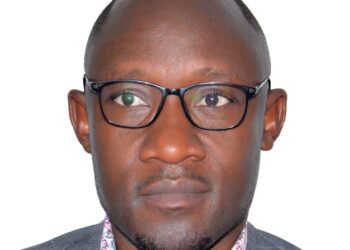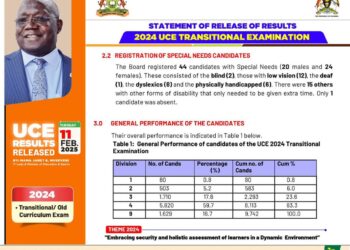For the last two years, I’ve been hearing a lot of noise from various activists, often called environmental activists, who are opposing the EACOP project. This project is transforming many lives and empowering countless people, but a few individuals, seemingly sponsored by detractors, are using all means to oppose it.
In the time I’ve focused on the oil and gas sector, I’ve engaged with many people in the Albertine region, including project-affected persons (PAPs). I have a good understanding of how much their lives have improved and what they’ve achieved since these projects began.
I have friends who invested significantly in studying oil and gas courses and are now employed in the sector, doing what they do best. I’m surprised by those who continue to criticize these developments. What do they want? Are their concerns genuine? Are they being influenced by others? Is it their own perspective, or is someone else shaping their views?
This week, I undertook a weeklong tour of Bunyoro and Sembabule, driven by my passion for the oil and gas sector. Surprisingly, I found myself in the company of the Executive Director of the Petroleum Authority, Mr. Rubondo, and the Deputy Managing Director, Mr. JB, who were there on a supervisory visit.
My goal was to explore archaeological and tourism sites, some of which were located within areas designated for the EACOP project. I was pleased to find that none of these sites had been disturbed; they were well-preserved and unaffected. In fact, the project has helped discover additional sites, such as the Omweso stone in Kakuuto and a massive tree over 100 years old.
These sites hold a wealth of history, and I learned a great deal during my visit. It was an enriching experience, and I had the opportunity to gain deeper insights from the team I encountered there.
The supervision of the EACOP project by the Petroleum Authority of Uganda (PAU) serves as a testament to Uganda’s dedication to progress in the energy sector. During my visit, led by the Executive Director of PAU, Mr. Ernest Rubondo, and accompanied by the Deputy Managing Director, Mr. JB Habumugisha, I witnessed firsthand the meticulous oversight aimed at ensuring adherence to timelines and upholding stringent quality standards. This dedication was tangible at every site we visited, reaffirming the project’s integrity and its significance in Uganda’s energy landscape.”
While there, I learned from Mr. Hadi Watfa, Manager of Above Ground Installation for EACOP, about some impressive milestones achieved by their project team. They managed to reduce their material usage by 62,000 units, saving $12,000 through better resource management. This shows a proactive approach to efficiency and cost-effectiveness, which is commendable in large-scale projects like theirs.
Equally impressive is their achievement in cutting environmental impact by 80%. This was made possible through innovative practices and rigorous environmental management, highlighting their commitment to sustainable development. It’s clear that EACOP is not only focused on project success but also on minimizing their ecological footprint, setting a positive example in their industry.
The project’s engagement with local communities stood out during our journey. In districts like Kakumiro, we saw firsthand how the project interacted with Project Affected Persons (PAPs), showing a thoughtful approach to mitigating displacement. Despite having 3,648 PAPs in Uganda, only 203 needed physical relocation, as most chose replacement housing. This reflects EACOP’s commitment to respecting community preferences and reducing disruption.
Their social engagement went beyond meeting regulatory requirements, aiming for real benefits for local residents. Collaborating with district authorities to upgrade roads not only improved logistical support but also minimized construction-related disruptions. This approach shows a comprehensive effort to integrate with the community, which is crucial for sustainable project success.
In Kasambya Subcounty, Kakumiro District, Mr. Rubondo personally connected with Project Affected Persons (PAPs), witnessing firsthand the positive impact of EACOP’s efforts in restoring livelihoods. These initiatives, which focus on sustainable development, play a crucial role in minimizing the project’s impact and enhancing resilience among local residents.
Patience Nabaasa, the Industrial Relations Coordinator, emphasized EACOP’s dedication to local employment by prioritising jobs for both skilled and unskilled workers from the area which not only brings economic benefits directly to the community but also fosters a sense of ownership and pride.
Merian Ahabwe, the National Content Manager, highlighted another aspect of EACOP’s strategy of subcontracting with local companies like NEC the business arm of the Uganda People’s Defence Forces (UPDF) and Pearl Engineering. This is so good because it supports Uganda’s economy but also builds long-term capacity by involving local firms in the project’s supply chain.
In Sembabule, Joseph Sekikubo, a Project Affected Person (PAPs) from MITI, shared his success story in tomato farming, attributing it to EACOP’s provision of reliable water sources. Through the Livelihood Restoration Program, PAPs not only enhance agricultural productivity but also gain essential skills and resources for self-sufficiency, fostering sustainable community development.
In Market Zone, Sembabule Town Council, Mr. Rubondo and Mr. Habumugisha saw firsthand the impact of EACOP’s housing and livelihood support programs. Beneficiaries like Kabugo Paul expressed appreciation for the project’s comprehensive approach, which includes vocational training aimed at sustainable livelihoods. His wife’s training in hairdressing demonstrates EACOP’s commitment to holistic development, empowering families to prosper alongside project activities.
My experience with EACOP revealed a project deeply committed to inclusive practices and community development. Main Camps and Piping Yards (MCPY Three) stands out for its efforts in promoting gender equality and local participation in the workforce. It’s impressive to see a significant number of women holding skilled positions, thanks to fair selection overseen by local authorities.
During our visit, the welfare of workers was a clear priority. Social induction programs and contributions to the National Social Security Fund (NSSF) highlighted EACOP’s commitment to ensuring employee rights and financial stability.
Beyond economic contributions, EACOP’s community initiatives are creating lasting impacts. Projects like farming gardens and water pumps have significantly boosted agricultural productivity, enhancing food security in the region. This comprehensive approach to community development was praised by Chairman Lwembawo John of Kimbejja for its positive influence on local well-being and resilience.
The completion of 177 replacement houses across multiple districts also stands as a milestone in EACOP’s Resettlement Action Plan (RAP), ensuring fair compensation and support for Project Affected Persons (PAPs). This approach mitigates social impacts and fosters stability within communities.
Looking at this project without any biases like some people do, EACOP represents more than just an infrastructure endeavor, it symbolises Uganda’s aspirations for sustainable development and local empowerment. The collaboration between the Petroleum Authority of Uganda, EACOP, and local communities reflects a shared commitment to progress and positive change. As the project progresses, those of us who understand its importance will continue to advocate for it, while those who oppose it for financial gain will be left to dwell in their negativity and failure.
Michael Woira
Patriotic Ugandan
Do you have a story in your community or an opinion to share with us: Email us at editorial@watchdoguganda.com













